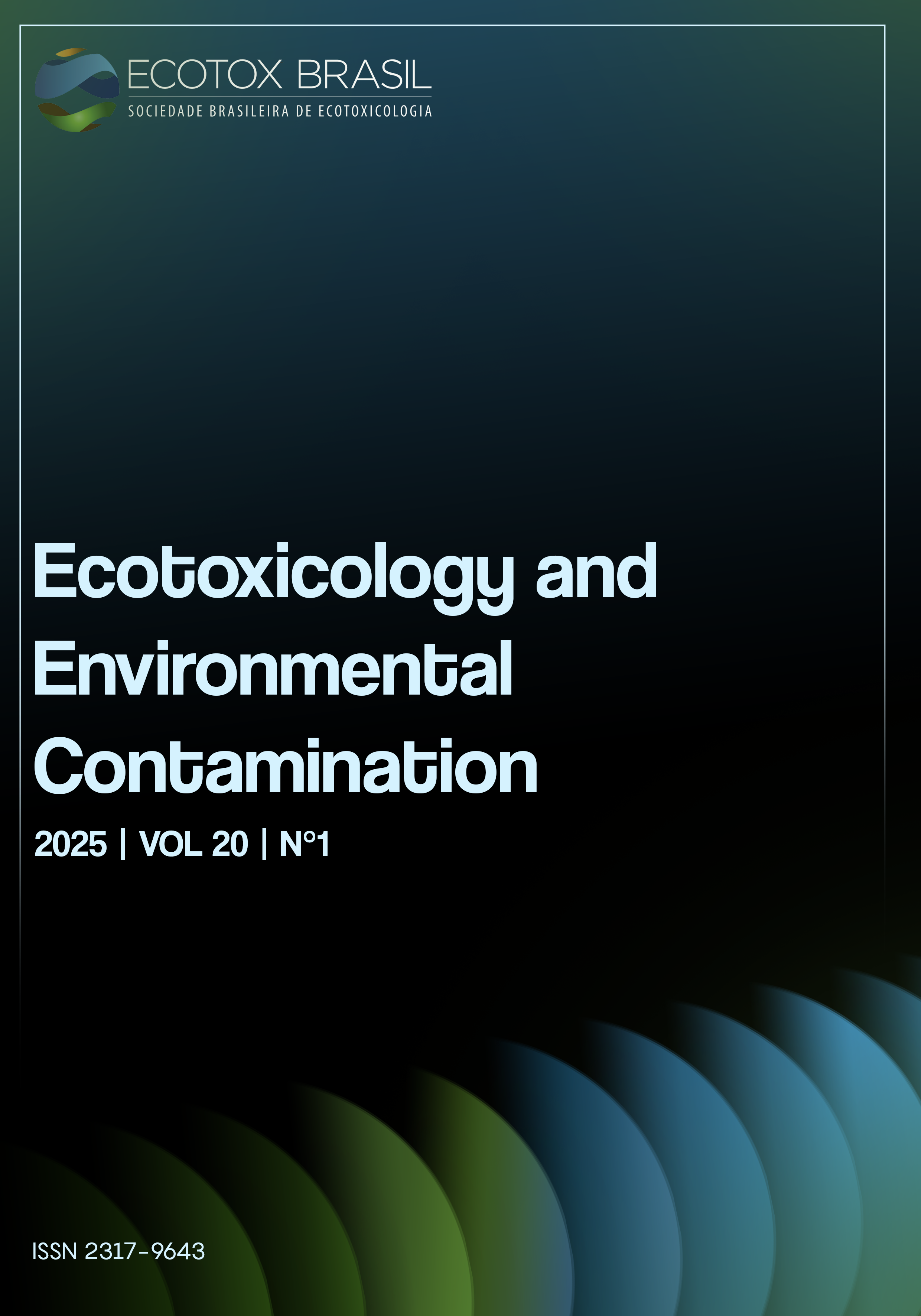Ecotoxicity of Terpenoids Oleanolic and Ursolic Acids to Pomacea canaliculata and a Non-target Species
DOI:
https://doi.org/10.5132/eec.2025.01.02Keywords:
aglycones, bioactivity, Ecotoxicology, golden apple snail, molluscicide, MutagenicityAbstract
We assessed the ecotoxicity of oleanolic (OA) and ursolic acid (UA) on juveniles of Pomacea canaliculata and Danio rerio larvae using 96-hour acute assays. Concomitantly, we determined the mutagenic activity of both acids by Salmonella/microsome assays with TA98 and TA100 strains in the absence and presence of S9 mammalian metabolic activation. In P. canaliculata assays, the LC50 values were not significantly different throughout the experimental period, ranging from 12.53 to 11.81 mgL-1 for OA and 13.05 to 11.82 mgL-1 for UA. In D. rerio, LC50 values were significantly different at 24 and 48 hours of exposure, ranging from 0.42 to 1.21 mgL-1 for UA and 0.55 to 4.81 mgL-1 for OA. In the Salmonella/microsome assay, only UA exhibited a direct mutagenic base-pair substitution response at 6.25 mgL-1, which decreased in the presence of in vitro rat liver S9 metabolic activation. In view of the results observed, the LC50 necessary for Pomacea eradication may lead to fish larvae mortality. The mutagenesis detected in UA extracts could impact populations lacking a mammal metabolic system. OA and UA pose risks to non-target species, with UA also showing mutagenic potential. Further assessment is needed before their use in pest control.
Downloads
Published
How to Cite
Issue
Section
License
Copyright (c) 2025 Ecotoxicology and Environmental Contamination

This work is licensed under a Creative Commons Attribution 4.0 International License.
Copyright © 2006 ECOTOX-Brasil
Copyright notice: It is a condition for publication that manuscripts submitted to this journal have not yet been published and will not be simultaneously submitted or published elsewhere. By submitting a manuscript, the authors agree that copyright for their article is transferred to the Sociedade Brasileira de Ecotoxicologia (ECOTOX-Brasil) if and when the article is accepted for publication. The copyright covers the exclusive rights to reproduce and distribute articles, including reprints, photographic reproductions or any other reproduction of a similar nature, including translations. No part of this publication may be reproduced, stored in a retrieval system or transmitted in any form or by any means, electronic, mechanical, photocopying, recording or otherwise, without permission of the publisher.
Notice: While every effort is made by the EEC, editors and editorial board to see that no inaccurate or misleading data, opinions or statements appear in this journal, they wish to make it clear that the contents of the articles and advertisements published herein are the sole responsibility of the contributors or advertisers concerned. Accordingly, the EEC, the editorial board and editors and their respective employees, officers and agents accept no responsibility or liability whatsoever for the consequences of any inaccurate or misleading data, opinion or statement.








